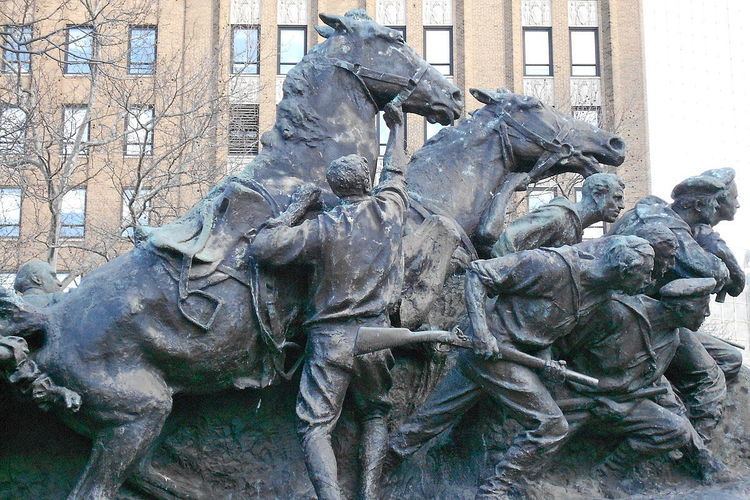Phone +1 973-900-5800 Added to NRHP 18 June 2004 | NRHP Reference # 04000649 Year built 1916 | |
 | ||
Architectural style Renaissance, Italianate Address 51 Park Pl, Newark, NJ 07102, USA Hours Open today · 7AM–9PMWednesday7AM–9PMThursday7AM–9PMFriday7AM–9PMSaturday7AM–9PMSunday7AM–9PMMonday7AM–9PMTuesday7AM–9PMSuggest an edit Similar Branch Brook Park, Wars of America, Newark Museum, New Jersey Performin, New Jersey Historical | ||
Military Park is a 6-acre (24,000 m2) city park in Downtown Newark, Essex County, New Jersey, United States. It is a nearly triangular park located between Park Place, Rector Street and Broad Street. From 1667, when the city was planned, until 1869 it was a training ground for soldiers. In 1869 it became the town commons.
Contents
The New Jersey Historical Society, Military Park Building and the New Jersey Performing Arts Center, and the Robert Treat Center are located across Park Place from the park. A $3.25 million renovation led by Dan Biederman was announced in February 2012. The reconstruction was expected to be completed in late 2013, but due to harsh weather was postponed until spring 2014. A restaurant, the first in the park, is planned. The park reopened in June 2014.
Features
In the southwestern part of the park is the colossal Wars of America monument, created by Gutzon Borglum, the sculptor of Mount Rushmore.
The sculpture itself forms the base of a large concrete sword built into the ground. The sword from the ground resembles a large dry fountain and from the air its shape is easily distinguished. The sword is about eighty yards long from the end of the statue to its tip; the blade is over ten feet across at its base. A bust of John F. Kennedy by Jacques Lipchitz was erected in 1965. The park also has an old drinking fountain with the phrase "My cup runneth over" carved around its base, and statues of Frederick Frelinghuysen and Philip Kearny.
A three-level underground parking garage is beneath the park. The Military Park Newark Light Rail station lies under the southwest end of the park at Raymond Boulevard and Park Place.
Doane Park
Doane Park is a tenth-acre triangular piece of land north of Military Park, where Broad Street and Park Place veer off and is separated from Military Park by Rector Street. A statue of Monsignor George Hobart Doane, for whom the park is named, was unveiled in 1908. Doane was a rector at St. Patrick's Pro-Cathedral and did much for the city including his work with the Essex County Park Commission.
